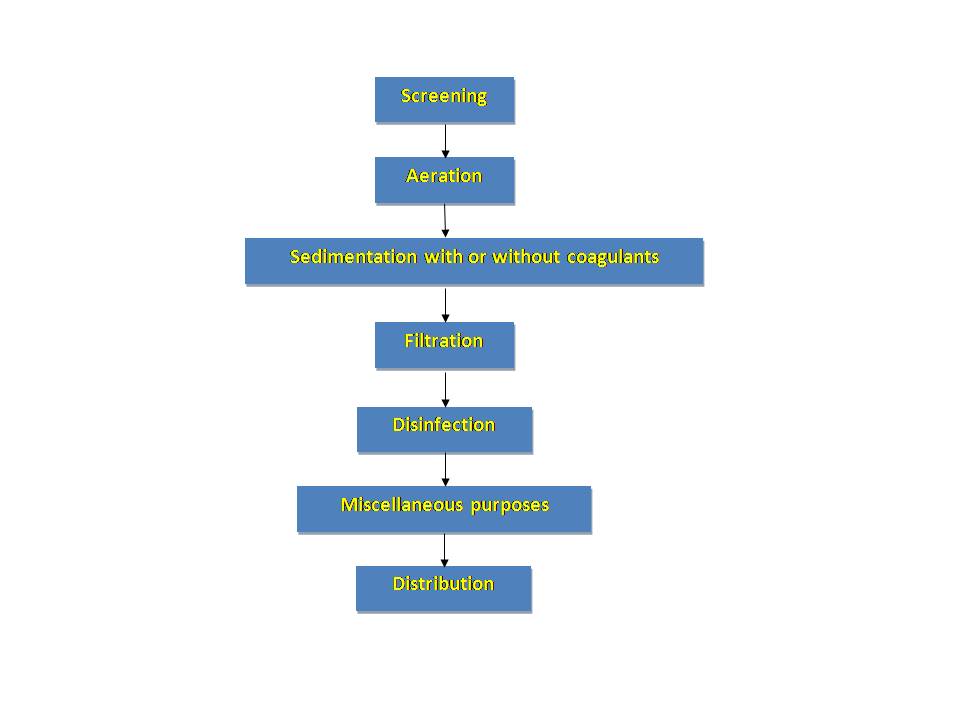Site pages
Current course
Participants
General
Module 1. IMPORTANCE OF SAFE WATER SUPPLY SYSTEM
Module 2. DOMESTIC WATER REQUIREMENTS FOR URBAN AN...
Module 3. DRINKING WATER QUALITY AND INDIAN STANDA...
Module 4. INTRODUCTION TO WATER TREATMENT, DOMESTI...
Module 5. SEWER: TYPES, DESIGN DISCHARGE AND HYDRA...
Module 6. INTRODUCTION TO DOMESTIC WASTEWATER TREA...
Module 7. SOLID WASTE: QUANTITY, CHARACTERISTICS A...
Module 8. INTRODUCTION TO AIR POLLUTION. TYPES OF ...
Module 9. ISI STANDARDS FOR POLLUTANTS IN AIR AND ...
Lesson-10 Introduction to water treatment
In this lesson, you will be exposed to various water treatment process in hierarchial order
The available raw waters must be treated and purified before they can be supplied to the public for their domestic, industrial or any other uses. The extent of treatment required to be given to the particular water depends upon the characteristics and quality of the available water, and also upon the quality requirements for the intended use.
Raw water may contain suspended, colloidal and dissolved impurities. The purpose of water treatments is to remove all those impurities which are objectionable either from taste and odour perspective or from public health perspective.
The layout of a conventional water treatment plant is shown below

For surface waters, following are the treatment processes that are generally adopted
Screening
This is adopted to remove all the floating matter from surface waters. It is generally provided at the intake point
Aeration
This is adopted to remove objectionable tastes and colour and also to remove the dissolved gases such as carbon-dioixide, hydrogen sulphide etc. The iron and manganese present in water also oxidized to some extent. This process is optional and is not adopted in cases where water does not contain objectionable taste and odour.
Sedimentation with or without coagulants
The purpose of sedimentation is to remove the suspended impurities. With the help of plain sedimentation, silt, sand etc. can be removed. However, with the help of sedimentation with coagulants, very fine suspended particles and some bacteria can be removed.
Filtration
The process of filtration forms the most important stage in the purification of water. Filtration removes very fine suspended impurities and colloidal impurities that may have escaped the sedimentation tanks. In addition to this, the micro-organisms present in the water are largely removed.
Disinfection
It is carried out to eliminate or reduce to a safe minimum limit, the remaining micro-organisms and to prevent the contamination of water during its transit from the treatment plant to the place of its consumption
Miscellaneous processes
These include water softening, desalination, removal of iron, manganese and other harmful constituents.